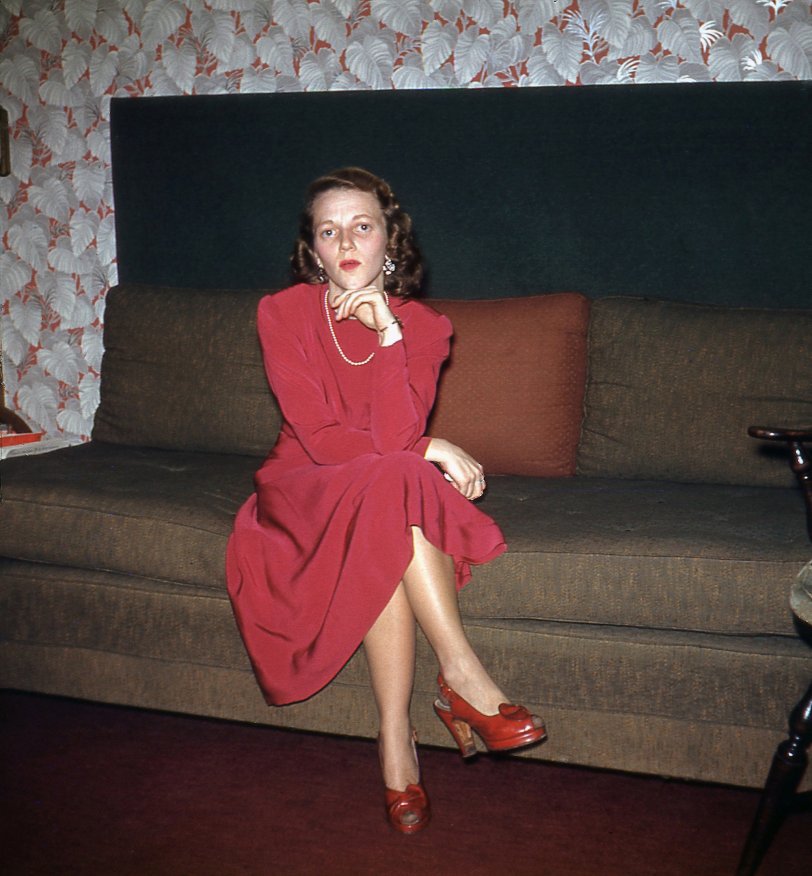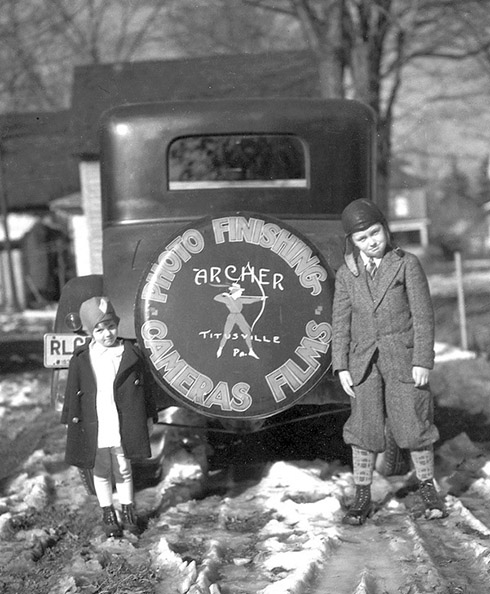


Framed or unframed, desk size to sofa size, printed by us in Arizona and Alabama since 2007. Explore now.
Shorpy is funded by you. Patreon contributors get an ad-free experience.
Learn more.

- Texas Flyer wanted
- Just a Year Too Soon
- WWII -- Replacing men with women at the railroad crossing.
- Yes, Icing
- You kids drive me nuts!
- NOT An Easy Job
- I wonder
- Just add window boxes
- Icing Platform?
- Indiana Harbor Belt abides
- Freezing haze
- Corrections (for those who care)
- C&NW at Nelson
- Fallen Flags
- A dangerous job made worse
- Water Stop
- Passenger trains have right of way over freights?
- Coal
- Never ceases to amaze me.
- Still chuggin' (in model form)
- Great shot
- Westerly Breeze
- For the men, a trapeze
- Tickled
- Sense of loneliness ...
- 2 cents
- Charm City
- What an Outrage
- Brighton Park
- Catenary Supports
Print Emporium
The Lady in Red

Actually my aunt, Shirley Archer, daughter of Ralph E. and Mildred M. Archer, owners of the Archer Camera Shop in Titusville, Pennsylvania, seen here earlier. Scan from an early kodachrome stereo slide taken by her father circa 1945-47 in their apartment above the camera store. View full size.
More like 1947 or later
This and the other Kodachome images from this set are all but certainly a few years more recent than 1945.
Film was severely rationed during the war and color film was generally only available to those working for the war effort. Normal availability for civilian use didn't begin until very late '45 with many things not available until as late as '47-'48.
Also, the David White Co. didn't actually begin producing the Stereo Realist, which introduced the "standard" 35mm stereo slide format, until early 1947. Stereo cameras existed before the war, but none used the Realist slide mount format. Other manufactures introduced competition to the Stereo Realist, but most of their offerings didn't appear until 1950 or later. Kodak's didn't appear until 1954.
Given that a camera store owner/manager would very likely "test" any new product as soon as he got his hands on one, I think that this was very likely shot in early to mid 1947.
15+ years earlier
At age 5 posing with both her brother (Ralph H. Archer) and the camera shop advertisement on the family car.

So rare!
What a wonderful use to put color film stock to when it was so rare! And those are not only peep-toe shoes, but platform sole, high heel, peep-toe, sling backs, in cardinal red! A beautiful match to the red dress and the requisite red lipstick as well.
Bet those were well-cared-for peep toes, as at a point fairly early in the War, high heels like these were impossible to come by, due to the requirement for steel shanks inside the soles that kept them from collapsing when worn! Not so much from the weight of the wearer as just the design of the sole of the shoe. The steel shank maintained the shape of the sole from the height at the top of the heel to the bottom under the toes, and kept it from collapsing at the arch under the weight of even the most delicate wearer. And of course, steel being classified as critical war materiel, meant it wasn't available for the production of such an unimportant item as milady's footwear to dress up her tootsies! This is what created the introduction and popularity of wedge heeled and wedge soles shoes, and cork soled shoes, as well as shoes with fabric covered outer soles of both varieties. Carved wooden soles and heels of very artistic designs also made appearances, and were quite popular for a while.
And certain dyes became unavailable as well, as they required certain chemicals in short supply. Which is why certain colors, such as black, brown, navy blue, and green seemed to dominate shoe colors for a while. Particular other colors seemed to be in definite short supply!
Leather also fell under early rationing for civilian use, particularly for shoes, no matter why they were needed. For a while, civilians were limited to three pair of leather shoes per year, with a few exceptions, such as if you could prove to your local ration board that a pair of leather work boots had to be either newly purchased for a new war job, or replaced for your war industry (or farm?) job. Towards the end of the war, everyone was down to two pairs of leather shoes per year!
Lovely girl. Great photo.
I like the way the girls of this era dressed. Lovely girl and a pretty dress!
Love those peep-toe pumps!
The 1940s had the best fashion!
























On Shorpy:
Today’s Top 5